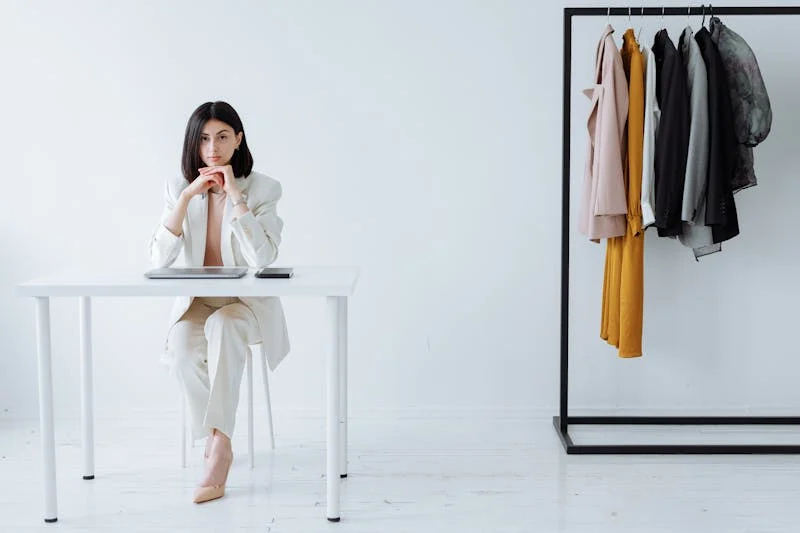
In today’s world, sustainability is no longer just a buzzword—it’s a necessity, especially in the fashion industry. With fast fashion contributing significantly to environmental degradation and labor exploitation, many fashion enthusiasts are looking for ways to make more eco-conscious decisions. If you’re ready to make a difference in your wardrobe choices, this guide will provide practical, sustainable fashion hacks to build a greener closet.
Why Sustainable Fashion is Essential
The Environmental and Ethical Impacts of the Fashion Industry
Fashion is one of the most polluting industries in the world, accounting for over 10% of global carbon emissions. The production of clothing requires vast amounts of water, energy, and chemicals, leading to air and water pollution, deforestation, and resource depletion. On top of that, the fast fashion model promotes the exploitation of cheap labor in developing countries, perpetuating unethical working conditions.
By embracing sustainable fashion, we not only reduce the environmental impact but also ensure that workers are paid fairly and work in safe conditions.
The Hidden Costs of Fast Fashion
The Dangers of Overconsumption and Environmental Harm
Fast fashion thrives on the constant churn of trends, encouraging consumers to purchase clothes that are often worn only a few times before being discarded. The environmental costs are staggering—massive amounts of textile waste end up in landfills every year, and the demand for cheap synthetic materials leads to microplastics in our oceans. Additionally, many fast fashion brands use harmful dyes and chemicals, further contaminating our ecosystems.
Opting for sustainable fashion is not just about aesthetics; it’s about making choices that protect the environment and the people who produce our clothes.
What is Sustainable Fashion?
Defining Sustainability in the Context of Fashion
Sustainable fashion is about choosing clothing that minimizes harm to the planet, people, and animals. It involves opting for ethical production methods, using eco-friendly materials, and ensuring that garments are designed to last. Instead of following fleeting trends, sustainable fashion encourages investment in high-quality, timeless pieces that can be worn for years, reducing the need for constant purchases.
It also includes repurposing, upcycling, and supporting brands that are transparent about their environmental impact and labor practices.
Sustainable Fashion Hacks to Build Your Closet
Mindful Shopping: The First Step
The foundation of a sustainable wardrobe starts with shopping mindfully. Before making a purchase, ask yourself: “Do I really need this? Will I wear it for years, or is it a fleeting trend?” By making thoughtful decisions and avoiding impulse buys, you can start reducing the amount of clothing in your closet and ensure that what you buy is something you will truly love and use.
Avoiding Impulse Buys
It’s easy to fall into the trap of impulsive shopping, especially with fast fashion brands offering constant sales and promotions. However, these impulse buys often lead to a cluttered closet filled with clothes you rarely wear. Take time to evaluate each item before buying. A simple trick is the “30-day rule”—wait 30 days before purchasing an item you feel compelled to buy, and see if you still desire it after that time.
Quality Over Quantity
Rather than buying multiple fast fashion items that will wear out quickly, focus on purchasing fewer but higher-quality garments. Opt for items that are versatile, durable, and made from sustainable fabrics. These pieces will last longer, wear better over time, and save you money in the long run.
Building a Capsule Wardrobe
A capsule wardrobe is a minimalist collection of clothes that can be mixed and matched to create a variety of outfits. By curating a set of high-quality, versatile pieces, you can avoid overbuying and make the most out of every item in your closet. This approach not only makes dressing easier but also encourages mindful consumption.
Materials That Last
When shopping for clothes, pay attention to the materials. Opt for natural, durable fabrics like organic cotton, wool, and silk, which are biodegradable and less harmful to the environment than synthetic fibers like polyester. Investing in fabrics that last will ensure that your clothing doesn’t need to be replaced as frequently.
Shop Secondhand for a Greener Closet
Why Thrift Shopping is a Sustainable Option
One of the best ways to build a sustainable wardrobe is by shopping secondhand. Thrift stores, vintage shops, and online resale platforms are goldmines for unique, high-quality items that are often just as good as new. Buying secondhand reduces demand for new clothing production, ultimately saving resources and reducing waste.
The Benefits of Vintage Fashion
Vintage clothing offers a double whammy of sustainability: not only is it environmentally friendly, but it also tends to be more durable and better made than many mass-produced garments. Vintage stores offer one-of-a-kind pieces that add personality and style to your wardrobe while reducing your ecological footprint.
Online Resale Platforms
Platforms like Depop, Poshmark, and ThredUp have revolutionized secondhand shopping. You can find everything from trendy pieces to high-end designer items, often in great condition. Shopping these platforms supports sustainable fashion by giving clothes a second life and helping to create a circular fashion economy.
Upcycling and Repairing Your Clothes
How to Repurpose and Fix Old Garments for a Sustainable Wardrobe
Instead of throwing away clothes that have become worn or outdated, consider upcycling them. Upcycling is the process of transforming old garments into something new and unique. A torn shirt can become a stylish tote bag, or an old pair of jeans can be turned into shorts. By upcycling, you give your clothes a second life and reduce the need for new materials.
Easy Upcycling Projects
Upcycling can be simple and fun! You don’t need to be a skilled seamstress to make something new out of old clothes. Try turning a pair of old t-shirts into a patchwork quilt, or adding embellishments like buttons and patches to refresh a plain jacket. There are endless creative possibilities.
The Basics of Clothes Repair
Another key to sustainable fashion is repairing what you already own. A broken zipper, loose button, or small tear can be easily fixed at home with basic sewing skills. Not only does this save you money, but it also prevents perfectly good clothes from ending up in landfills.
Sustainable Fabrics to Look For
When building a sustainable wardrobe, it’s important to choose fabrics that are kind to the environment.
Organic Cotton, Hemp, and Linen
Organic cotton is grown without synthetic pesticides and fertilizers, making it much less harmful to the environment. Hemp and linen are also sustainable options, as they require fewer resources to grow and are naturally biodegradable.
Recycled Materials and Tencel
Recycled fabrics, such as polyester made from recycled plastic bottles, are an excellent choice for eco-conscious consumers. Tencel, made from sustainably sourced wood pulp, is another great option—it’s soft, biodegradable, and produced using a closed-loop process that minimizes waste.
Building a Circular Fashion System
Creating a Closed-Loop Wardrobe for Sustainability
A circular fashion system aims to reduce waste by keeping clothes in use for as long as possible. This involves reusing, recycling, and upcycling clothing, as well as participating in clothing swaps and donating items to be reused by others.
The Power of Clothing Swaps
Clothing swaps are an effective and fun way to refresh your wardrobe without buying new clothes. Organize a swap with friends or participate in local swap events to exchange gently used items. This encourages recycling and reduces the demand for new clothing.
Donate and Sell Old Clothes
If you no longer wear something, consider donating it to charity or selling it online. This gives your clothes a second life and prevents them from ending up in a landfill. Many resale platforms also make it easy to sell clothes you no longer wear.
Conclusion
Building a greener, more sustainable wardrobe doesn’t require an overnight overhaul. By following these sustainable fashion hacks—shopping mindfully, choosing quality over quantity, embracing secondhand fashion, and learning to repair and upcycle—you can create a closet that’s both eco-friendly and stylish.
Remember, sustainability is a journey, and every small change you make can have a big impact. Start with a few conscious decisions and build from there—your wardrobe will not only look great but also feel great knowing that you’re contributing to a more sustainable future.

FAQs
- What is sustainable fashion? Sustainable fashion refers to clothing that is produced and consumed in ways that minimize environmental impact and promote ethical practices, including fair labor conditions and eco-friendly materials.
- How can I make my wardrobe more sustainable without spending a lot? You can shop secondhand, upcycle your old clothes, and invest in high-quality pieces that will last longer. Additionally, focus on buying less and making thoughtful purchases.
- What are some eco-friendly fabrics to look for? Look for organic cotton, hemp, linen, Tencel, and recycled fabrics. These materials are produced in a way that’s gentler on the environment and offer better sustainability.
- How can I repair my clothes instead of throwing them away? Learn simple sewing techniques like fixing seams, replacing buttons, or patching holes. There are plenty of online tutorials to guide you through the repair process.
- Can sustainable fashion still be stylish? Absolutely! Sustainable fashion is all about timeless pieces that are versatile and durable. By choosing classic, well-made garments, you can build a wardrobe that’s both stylish and eco-conscious.





